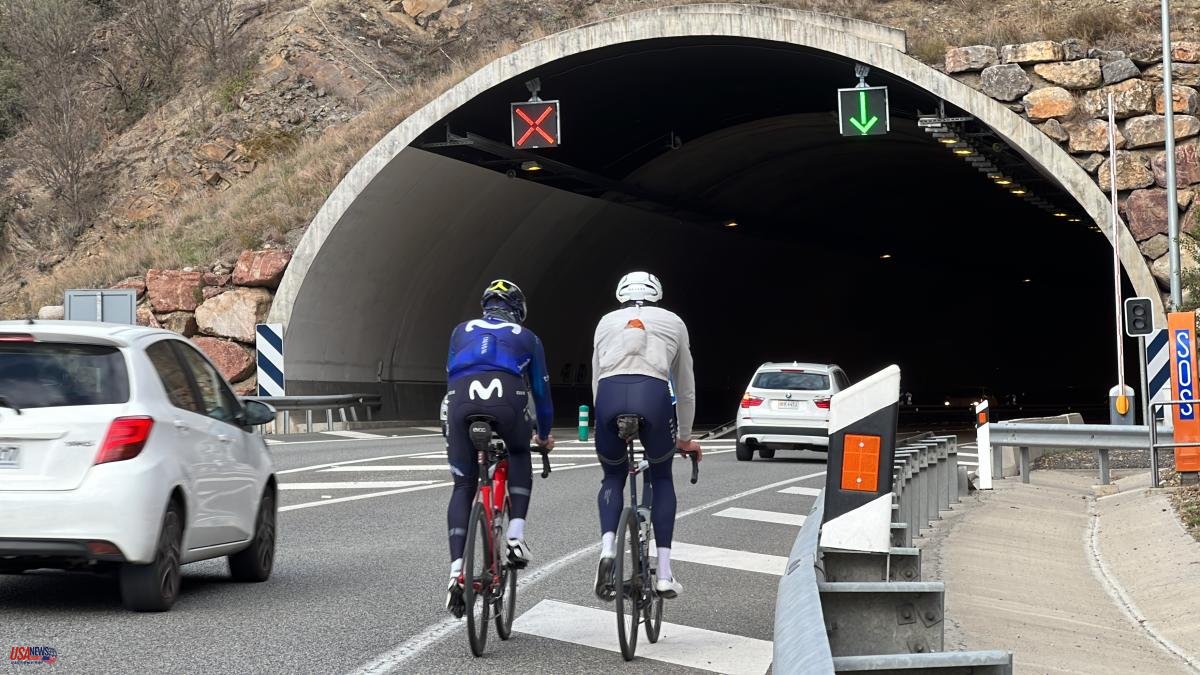The Catalan Traffic Service (SCT) has launched a system that warns of the presence of cyclists inside a tunnel, with the aim of reducing accidents for this vulnerable group.
It is a pioneering device in the entire Spanish state and has been installed in La Seu d'Urgell, on the N-145 road that goes towards Andorra. It serves to dynamically warn vehicle drivers of bicycle circulation inside tunnels and warn them that they should reduce speed.
It works through an image recognition system using artificial intelligence, which detects cyclists before entering the tunnel, and light warning signs that inform about their presence.
Once the image recognition system based on artificial intelligence detects a bicycle at this point on the road, the warning panel is turned on to alert you of the presence of a cyclist in the tunnel. The sign, which in turn also indicates a reduction in the maximum permitted speed, remains active for the estimated time it takes the cyclist to cross the tunnel. Subsequently, it turns off automatically and remains deactivated as long as a bicycle is not detected.
The deputy general director of traffic management of the Catalan Transit Service, Lourdes Puigbarraca, has explained that the objective of the implementation of this system, on a pilot basis, is to improve the safety of this group on this road.
In this sense, he said that it was decided to install it in La Seu d'Urgell, near the Bordar tunnel, because it is a road that supports traffic of more than 10,000 vehicles daily and where there are people who practice cycling from one side. sporty. However, the idea is to extend it to several roads in Catalonia and the sections where there is high mobility by this group and which register a higher accident rate are just being studied.
Puigbarraca has indicated that in recent years there has been an increase in bicycle mobility, both as a means of transport and from a sports and leisure perspective.
In this first panel, the speed must be reduced from 80 to 60 kilometers per hour and, in order to verify that the regulations are complied with, joint controls are planned to be carried out with the Mossos d'Esquadra.
The deputy director of traffic management explained that the main infractions by vehicle drivers have to do with speed, in addition to not respecting the safety distance of 1.5 meters. There are also them due to distractions behind the wheel or defects on the road.
At the same time, work is also being done on a safe traffic map for cyclists in which all accident accumulation sections will be indicated.
In addition, we want to promote, together with local entities, preferential use for cyclists on certain roads during certain days of the week, as the Berguedà Regional Council did with the Coll de Pal road.
The Catalan Cycling Federation has valued the implementation of this system very positively. Its president, Joaquim Vilaplana, has also spoken of the need to sanction drivers who do not reduce speed when they encounter a cyclist and that "maximum penalties" be applied in the event of a reckless death.
So far this year, four cyclists have lost their lives on Catalan roads and another 63 have been seriously injured. The figure reaches 121 victims in the last 15 years, in which more than 6,000 road accidents have occurred in which a cyclist has been involved.













